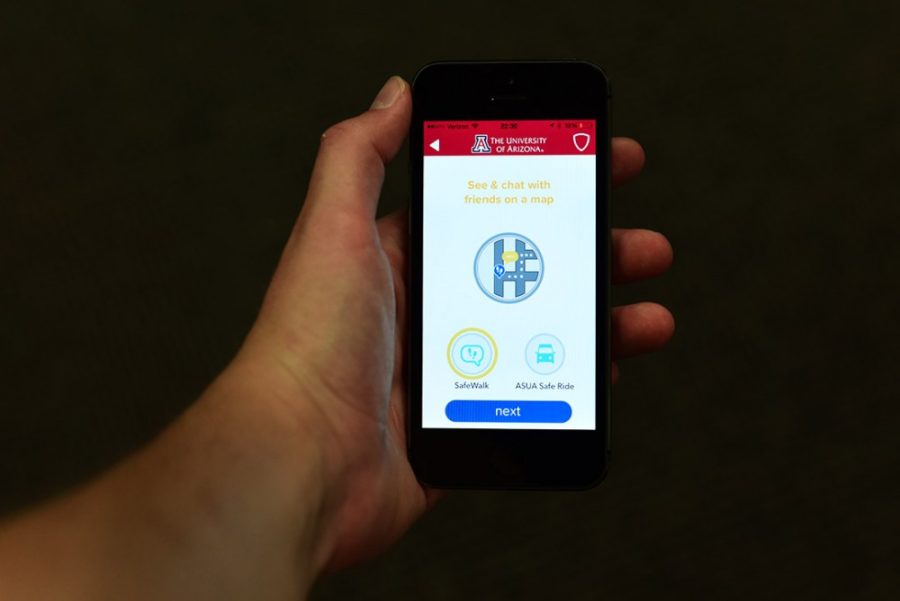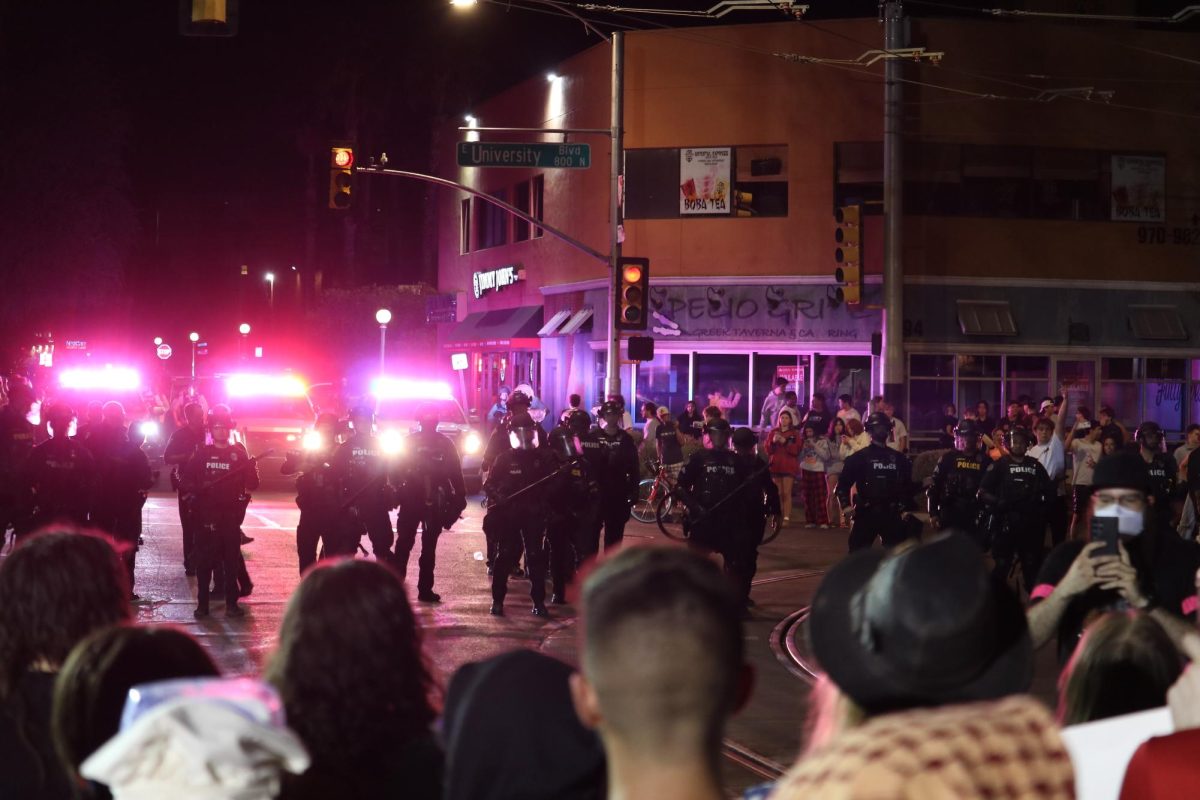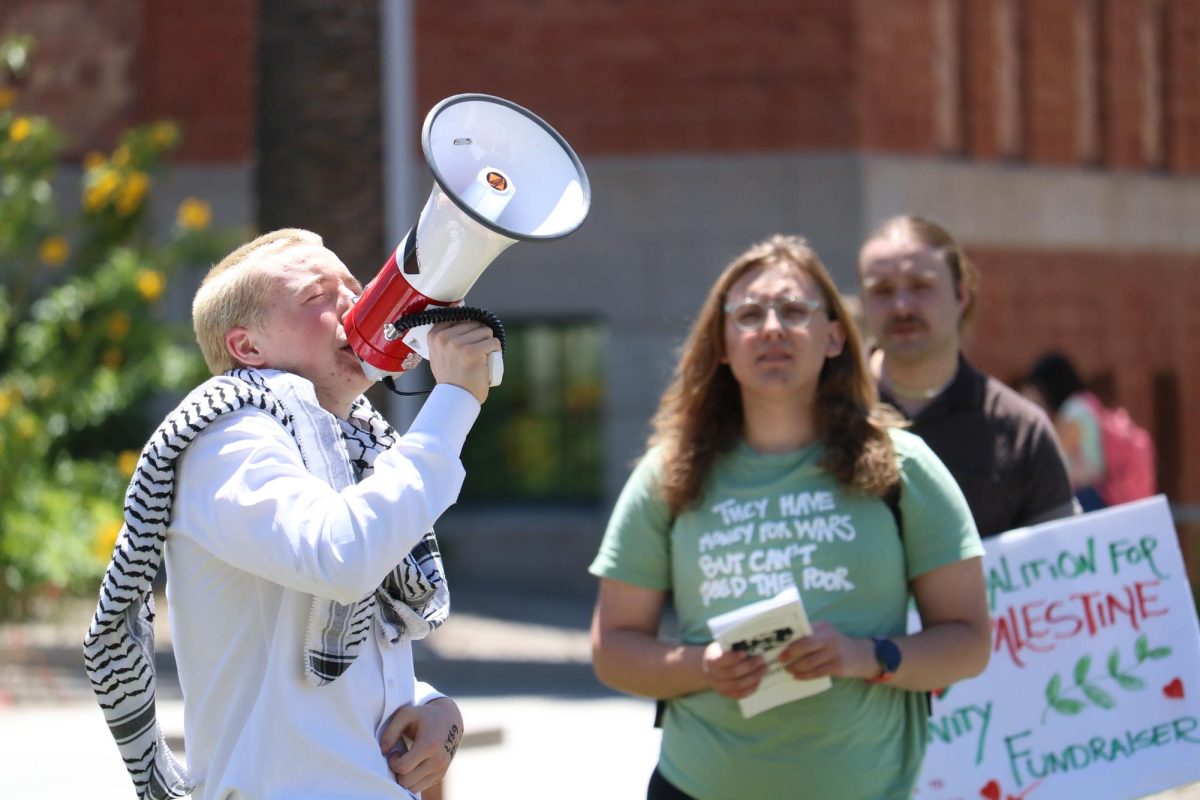The University of Arizona Police Department consists of 66 state-certified police officers and 49 civilian employees all with one common goal in mind.
“We emphasize life safety,” said UAPD Chief Brian Seastone, who hopes to break down the misconceptions students commonly associate with campus police.
“There is a letter and spirit of the law,” he said. “We are fortunate in our environment that we can work in the spirit of the law.”
UAPD primarily patrols between Eighth Street, Lester Avenue, Campbell Avenue and Euclid Boulevard, as well as other UA facilities like Biosphere 2, Tech Park and downtown.
However, its jurisdiction is not limited to campus. “All of our officers are state-certified police officers,” Seastone said. “In Arizona, we have a statute that allows any police officer to go anywhere in the state to perform a law enforcement act.”
The goal is not to bust every student on campus for a misdemeanor crime. Although officers still closely follow the letter of the law, Chief Seastone noted that officers deploy a lot of digression.
“We know [students] are going to make mistakes,” Chief Seastone said, referring to the mistakes as “youthful indiscretions.”
“A lot of officers have gone to school here and graduated from here,” he added. “They know the experiences and gauntlet of this atmosphere.”
As a way to protect college students’ futures from a damaging legal record, the UAPD implemented the UA diversion program about 30 years ago.
According to Chief Seastone, the program was approved as one of the first programs of its kind in the country and today is a model used for many other diversion programs in the nation.
UAPD officers have the option to divert students through the Dean of Students Office for certain misdemeanor crimes if they meet the initial criteria for UA diversion, which is powered by the Superior Court and county attorney to adjudicate internally.
Chief Seastone said it’s a good educational experience. Instead of paying money for the citation, students can attend a few approved classes and programs in order to have the charge permanently expunged from their record as if it never happened.
However, failure to complete the program by the deadline will result in the filing of the initial charges. A common charge students enter the UA diversion program for is the minor in possession of alcohol citation.
Chief Seastone noted that his main concern is the safety and well-being of all students and visitors—not underage drinking.
“When I took over as chief [in March 2014,] it was very clear through the public forums that I attended that people wanted to call and get help or report things, but they were afraid to because they thought, ‘I’m 19 and I might have been drinking,’” Chief Seastone explained. “I don’t want anybody to ever not report a crime or get help—police, fire or medical—because they had been drinking or something. Life safety is much more important.”
In the next few months, Chief Seastone hopes to present a final version the “Good Samaritan Law” to the university. The law would protect minors from minor in possession citations and other charges if they seek assistance to help someone else who might need treatment for alcohol poisoning or overdosing.
“So with the Dean of Students Office and input from students, we have drafted something that … ‘If Phil [my roommate] is walking me home—he’s 19—and I need medical help, he’s not going to get busted with an MIP,’” Chief Seastone said.
He wants students to know UAPD is not a campus baby sitter service. UAPD is a campus resource that provides a variety of services and features, from campus alerts to Campus Health Services, to fingerprinting, to signing off on “fix-it tickets” and the launch of its new smartphone app—LiveSafe.
Students can report crimes directly to UAPD through the app—just click it and send it.
“If you see a fight going on or a crime, we don’t want people to be hurt reporting things, but they can text us, call us, snap a picture or audio file so we know what is going on,” Chief Seastone said. He added that these should not be used in emergency situations. The app is only intended for use in response to traffic accidents or destruction of property.
The app also has a SafeWalk feature, which allows students to message a friend through the app and alert them of their movements. The friend can then track the user’s movements through smartphone geo-tagging.
Students can also directly contact 911 or SafeRide by pressing one button. Lastly, students have access to emergency plans that assess potentially dangerous situations and provide safety instructions. The app is free to download.









